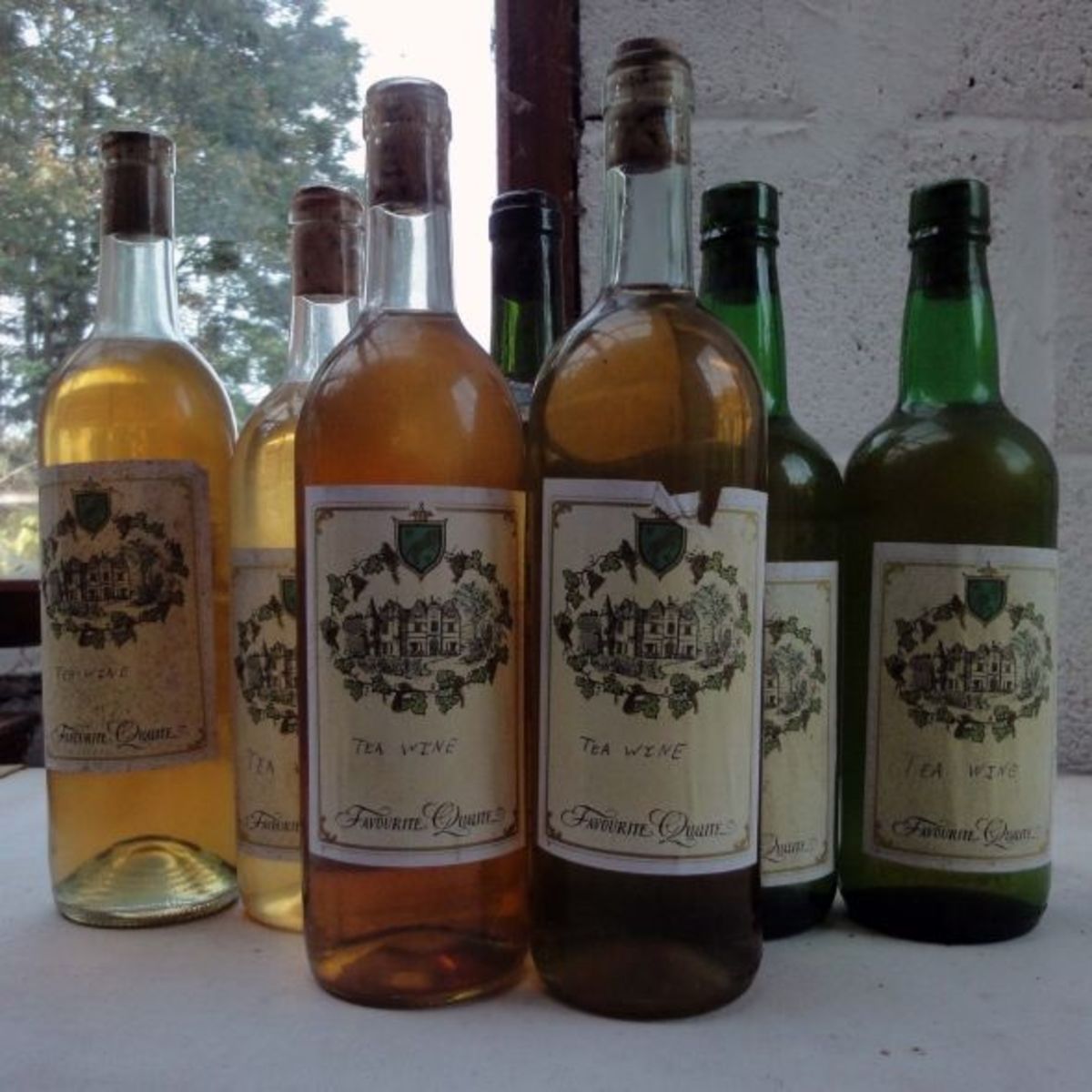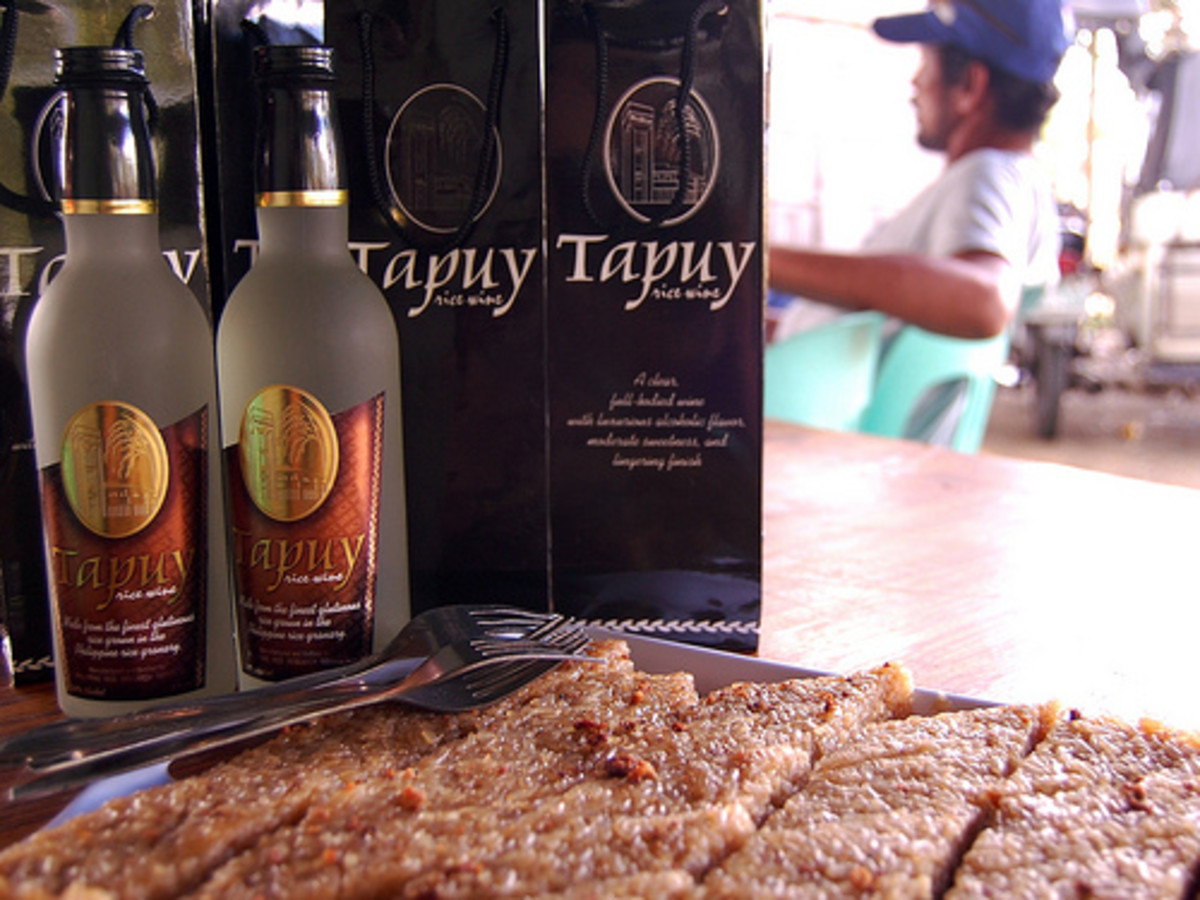A Prohibition Era Wine Recipe
An Ancient Art
The basics of wine making are easy and inexpensive.
Wine is nothing more than fruit juice that has been mixed with yeast which converts the sugar in the juice to alcohol. The alcohol then preserves the juice by killing off harmful bacteria that cause juice to become sour and cause sickness or death.
Wine making was one of the few ways humans had in ancient times of preserving food so that it could be stored and used throughout the year rather than having to consume it all at harvest.
Grapes are ideal for wine making since yeasts grow naturally on the skins of the grapes and the sugar content of most varieties of grape is high enough to both ferment into alcohol while, at the same time, having enough sugar remaining to sweeten the wine.
Brew a Beverage and Re-enact History
With the passage of the Eighteenth Amendment to the Constitution on January 16, 1919 which allowed the Federal Government to ban the production and manufacture of alcoholic beverages, the nation entered into a decade long experiment in which the government tried to stamp out consumption of alcohol while, at the same time, enterprising Americans set new records for the consumption of alcoholic beverages.
Because the chemistry involved in making alcohol is so simple, many people simply brewed their own drinks and life continued as it always had.
Here is a Prohibition Era recipe, using the same common household items that our great-grandparents used to make wine at home while avoiding detection by the Feds.
Grape wine can easily be made at home and without the need for special equipment.
The making of wine at home is now legal in most parts of the U.S. so long as you are of age, it is for your own consumption and you don't try to sell it.
While the taste and quality will not compete with the inexpensive wines that can be found in the local supermarket, it is drinkable and allows you the satisfaction that comes with serving your own “basement bottled” wine with dinner.
Ingredients and Equipment Needed
- 1 One-Gallon Glass Jug
- 2 12 Ounce Cans, Frozen Grape Juice
- 1½ Cups, Sugar
- 1/4 Teaspoon, Wine Yeast or Dry Baker's Yeast
- 3/4 Cup, Warm (NOT HOT) Water
- 6 Inch, Piece of Twine
- 1 Funnel
- Two or Three foot length of ½ to ¾ inch clear plastic, Tubing
Instructions
- Clean and sterilize glass jug by washing with warm, soapy water and rinsing thoroughly. Then run it through the dishwasher where the heat will sterilize it.
- It is very important to make sure that the jug and all utensils used in the making of the wine have been sterilized by running through the dishwasher. This will kill any bacteria which will spoil the wine if it comes in contact with the wine.
- If using frozen juice concentrate, thaw and mix in clean container that has recently been washed in dishwasher. You can use either tap water to mix the juice or distilled water (if you use distilled water you will avoid picking up any chlorine taste that the tap water might contain).
- f you use regular, rather than concentrate, grape juice, pour juice into clean container.
- Add sugar and stir until thoroughly dissolved.
- Pour grape juice and sugar mixture into gallon jug using funnel to avoid spilling. Fill to just below the neck of the jug.
- Mix and dissolve yeast in ¾ cup of warm (not hot) water, then pour into jug.
- Affix balloon securely over the mouth of the jug and secure with the twine.
- Place jug in cool (constant 70 degrees is best but temperature can vary some) dark place (basements are ideal) and let sit for 3 to 4 weeks. As the yeast acts on sugar converting it to alcohol, carbon dioxide will be released as a by product. This gas will be released into the balloon and the balloon will enlarge (which is why you want to use a large, thick balloon – you don't want it to break). As the fermentation comes to an end, carbon dioxide production will cease and the balloon will tend to deflate.
- After about 3 – 4 weeks you will see the balloon deflating and the juice becoming clear. There will be sediment on the bottom of the jug.
- At this point,remove the balloon and and use the plastic tubing to siphon juice into a second sterilized jug. B careful not to disturb or transfer the sentiment. The sentiment can be poured down the drain.
- Securely cap the jug containing the wine with a screw-on cap or cork stopper. Store in a cool place for 6 to 12 months while it ages and then serve.
Rating
If you find you enjoy this, then visit wine making sites on the Internet to learn more about making wine from both grapes and other juices.
At this point you should invest a few dollars in slightly more sophisticated gas locks to replace the balloon and start increasing your production of your home brewed wine.
You might also find it interesting and informative to visit some wineries to see how the professionals produce wine.
States like California and New York have many wineries which usually offer free tours and tastings. Smaller wineries are popping up all over the nation so you may find one or more near you.
In addition to online venders of wine making supplies, wine making and brewing supply stores can be found in many cities around the country. These are often staffed with people with a passion for making wine and who can provide suggestions and advice as well as explaining the proper use of the equipment and supplies they sell.
© 2006 Chuck Nugent









